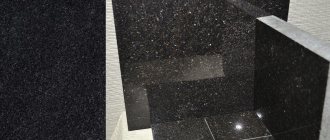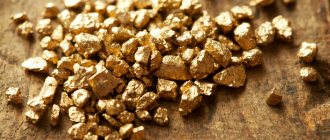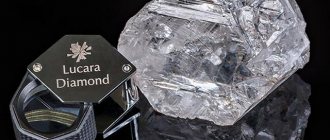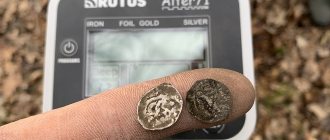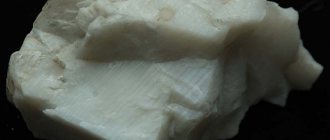History and origin
The ancient origin of magnesite is a historical fact. Its healing, magical, and fire-resistant properties were known back in ancient times; people could use the mineral for its intended purpose.
The fossil was first discovered in Magnasia, which is located in Greece. One of the largest mines was discovered there. The breed they contained aroused interest among the local population. They tried to burn the ore, as a result of which it turned out that it could withstand high temperatures. Since then, magnesite has been used as a fireproof material.
Its deposits occur in the form of large layers, thanks to which it has found application in some industrial sectors. In the largest deposits, at medium and shallow depths, such masses are formed as a result of hydrothermal processes. Crystalline mineral formations were exposed to hot alkaline solutions, resulting in the formation of ore.
Hydrothermal crystals of value are found in mineral formations adjacent to magnesite. Cryptocrystalline magnesite is formed by weathering of rocks.
During the chemical reaction of water, air and mineral mass, magnesium silicates are destroyed, which contributes to the precipitation of magnesite in the pores and cracks in which groundwater stagnates. The mineral formed in this way contains impurities of Opal and Dolomite, as indicated by veins.
Magnesite and hydromagnesite are found in sedimentary rocks of salt-bearing deposits; such minerals are of interest for jewelry production.
Magnesite: new enrichment technology
The world's largest and Russia's main manufacturer of highly refractory products, OJSC Magnezit Combine, is searching for a more advanced and efficient technology for enriching magnesite ore. Scientists from IPKON RAS, at the request of the plant, conducted studies of the ore enrichment regime in a pneumatic pulsation machine. The research methodology and results are discussed in this article.
The natural magnesite of the Satka group deposits contains impurities of dolomite, calcite, quartz, iron and others. Particularly harmful are mineral impurities containing silicon and calcium oxide, which form fusible compounds after firing, sharply reducing the quality of refractories. High-quality refractory materials can be obtained from magnesite concentrates containing a minimum amount of impurities, mainly CaO and SiO2. Removing these impurities, especially silica, is the main task of beneficiation of magnesite ores.
Two methods have been developed for the enrichment of magnesites: separation in heavy suspensions and flotation.
Heavy suspensions cannot provide the required degree of separation of magnesite and dolomite due to the close densities of these minerals. For deep enrichment of magnesites with a high content of fine grains and fine intergrowth of minerals, an effective method is flotation, the technology of which was developed in detail by specialists from the Uralmekhanobr Institute and. The deslimed ore was floated in a soda environment at pH = 10.0–10.5. VAT residues of synthetic fatty alcohols (SFA), tall oil (TM), and technical fatty acids (TCFA) were used as collectors. For the depression of calcium- and silicon-containing minerals, sodium hexametaphosphate (SMP), carboxymethylcellulose (CMC), water glass (LG) and aluminum sulfate were commonly used.
Schemes for enriching magnesite ore in mechanical flotation machines provided for three recleanings of the magnesite product. Practice has shown that the yield of the concentrate and its chemical composition significantly depend on the chemical composition of the original magnesite. For ores with a high silicate content, reverse flotation was used.
Subsequently, it was proposed to use only HM as a collector during flotation enrichment of magnesite raw materials with a mass fraction of impurities in it up to 3% CaO and up to 2% SiO2. In case of a higher content of impurities - TM together with soaps from the refining of methyl fats. Their use made it possible to obtain magnesite concentrate with a CaO and SiO2 content of 0.74 and 0.39%, respectively, from raw materials with a high content of impurities. The yield of magnesite concentrate was 52.7%. Other combinations of reagents were also used.
Pneumatic pulsation flotation differs from conventional flotation in that separation occurs in a liquid that performs vertical reciprocating movements with a certain frequency and amplitude. Aeration of the liquid is carried out due to the movement of the liquid-gas interface through dispersants in a stationary aerator when pulsating air is supplied to it. Thanks to pulsation effects, the air bubble floats up at a variable speed, which depends on the frequency and amplitude of the pulp vibrations. At the same time, the hydrodynamic conditions of interaction between phases and the physical and mechanical properties of the dispersed system change in the flotation chamber.
Pneumatic pulsation flotation machines designed by IPKON RAS and LLC ELAS with a volume from 0.1 to 21 m3 were tested in various operations during the flotation of phosphorites, hard coals, polymetallic and copper-nickel ores, and potassium salts [1, 2]. The most extensive research in industrial conditions was carried out during the flotation of potassium salts from the Verkhnekamsk deposit and polymetallic ore at the Zyryanovsk concentrating plant.
A device with a volume of 0.1 m3 was tested in cycles of zinc and lead flotation of polymetallic ore. At the same time, it was established that it was possible to increase the zinc content in the finished concentrate by 5–6% without reducing recovery, i.e. due to improved selection. Pulsation flotation using this apparatus made it possible to increase not only the lead content in the concentrate by 3%, but also its recovery by more than 5%. Due to the high separation selectivity of pulse flotation with the return of chamber products to previous operations, copper recovery was simultaneously increased and the quality of the copper concentrate was improved.
Tests of the FPP-7.7 flotation machine in the re-cleaning operation of rough sylvite concentrate have shown that the use of this device allows, in one processing stage, instead of three in mechanical flotation, to obtain a stable increase in the mass fraction of KCl in the concentrate by 0.5–3%, to reduce the content of the valuable component in the tailings by 8–11% and on average increase the extraction of potassium chloride by 1.5%. In this case, it is possible to obtain a foam product with a solid content of up to 65%, which reduces dehydration costs. High selectivity of the processes of separation of fine particles and high specific productivity at low energy costs (up to 0.3 kWh/m3 of pulp) were noted.
A pneumatic pulse flotation machine with a chamber volume of 21 m3 with a capacity of up to 500 m3 per hour is constantly operating in the sludge flotation operation at the processing plant of the 2nd potash mine of Uralkali JSC. In the near future, a machine of a similar design with a chamber with a volume of 15 m3 will operate in the cleaning operation of sylvite concentrate (Fig. 1). This device was made of stainless steel at the Perlovsky Power Engineering Plant (Moscow region) and is now being installed at the processing plant of the 3rd mining department of Uralkali JSC.
Technological research on the enrichment of magnesite ore from the Satkinskoye deposit was carried out in an enlarged laboratory column pneumatic pulsation flotation machine on two samples, the characteristics of which are presented in diagrams (Fig. 2).
The main mineral of the studied ore is magnesite; impurities include dolomite, calcite, brucite, quartz, chlorite, and in small quantities serpentine and other minerals.
According to the results of X-ray phase analysis of magnesite samples in the laboratory of IPKON RAS, no calcite was found in the ore, therefore, almost all calcium is associated with dolomite, which makes the ore very difficult to process. The results of the analysis of ore crushed in laboratory conditions are presented in the diagram (Fig. 3).
Flotation studies were carried out using technical (river) and mine water delivered from the Magnezit plant. The results of industrial water analysis are given in table. 1.
As analyzes have shown, mine water differs from river water (see Table 1) in the large amount of impurities of iron, calcium and magnesium found both in the solution and in the sediment. Preliminary experiments have established that the use of such water in the flotation of magnesite leads to disruption of the flotation process and a significant decrease in the concentrate yield. It is known that the quality of water used for flotation can be significantly improved by treating it with electric current [3]. When conducting most flotation experiments on magnesite using mine water, its preliminary electrochemical treatment with settling was carried out.
Flotation experiments were carried out on an enlarged laboratory installation (Fig. 4), which has a flotation chamber of rectangular cross-section 40(80 mm, height 3000 mm and a working volume of about 10 liters. Flotation chamber 9 has two side aerators, which, using a pulsator 13, alternately communicate with the source compressed air (compressor) and with the atmosphere. Pulsation parameters are set by an electronic oscillation generator. The amplitude-frequency mode of operation of the pulsation flotation apparatus is selected taking into account the results of the study (referring to research conducted with the support of the Russian Foundation for Basic Research, grant No. 99-05-64191) interaction of phases under conditions of pulsation flotation.
The pulsation frequency under optimal conditions was taken to be 24 counts/min. At this frequency, the pulp in the flotation chamber performed vertical vibrations with an amplitude of 14 mm.
Ore flotation was carried out in semi-continuous and continuous modes. When operating in semi-continuous mode, the source material (1.5–3.0 kg sample) was loaded into overflow tank 4. The chamber product was collected into container 11. The pulp level in the chamber in this case was maintained by water supplied through the supply pipeline at the end of the power input. When operating in continuous mode, the entire chain of devices shown in Fig. 4 was used. In addition, instead of container 11, an air lift was installed and the chamber product was unloaded through device 17, with the help of which the required pulp level was maintained in the flotation chamber.
To compare technological indicators and determine the effectiveness of the pneumatic pulsation method, flotation experiments were carried out in parallel on a pneumatic pulsation flotation machine and in a mechanical laboratory (chamber volume 0.25 l): direct and reverse magnesite flotation schemes were used, including different numbers of cleaning operations, different flow rates and reagent supply conditions.
Direct flotation was carried out at pH~10 in a soda medium. Two reagent modes were used:
1) CMC - 100 g/t, HMF - 100 g/t, TM - 700 g/t;
2) ZhS - 900 g/t, aluminum sulfate 150 g/t, TM - 400 g/t and KOS - 400 g/t.
The results of experiments on pneumatic pulsation flotation of both samples on industrial and mine water and on flotation of sample No. 1 in a laboratory mechanical flotation machine allowed us to draw several fundamental conclusions.
A comparison of the results of flotation of sample No. 2 on mine and process water shows that purer process water makes it possible to obtain slightly better quality foam products with a higher yield. The main flotation concentrates using process water are very close in chemical composition to the concentrate obtained from mine water. The difference in the content of valuable components does not exceed 0.2%, and impurities – 0.1%.
At the same time, the difference in the yield of the foam product and, accordingly, the extraction of MgO is more than 14% in favor of the use of technical water. At the same time, the absolute content of harmful impurities in these products, especially silica, is quite high and does not allow one to abandon cleaner flotation.
Cleaner flotation in both cases reduces the yield of concentrates by 7–8%, while, along with an increase in their quality, the difference in the content of components increases slightly and the foam product during flotation on process water corresponds to the specified standards in terms of impurity content, and when flotation on treated mine water water is close to them.
Flotation of ore sample No. 1 on mine and process water also showed similar results. In both cases, after cleaning flotation, standard products of almost the same composition can be obtained, although the yield of concentrate when using process water is 2–3% higher, and the extraction of magnesite is correspondingly higher.
The data obtained show that the difference in the quality of products during flotation in pneumatic pulsation flotation machines depends little on the quality of the starting materials. The lower MgO content in sample No. 1 reduced the concentrate yield during flotation on industrial water, but did not change its quality. It is interesting that the difference in the content of impurities in the samples also had virtually no effect on their content in the foam cleaning product. In sample No. 1, the CaO content is more than twice as high as in sample No. 2 (3.44% and 1.52%), but in the final products the difference is either absent (mine water) or 0.13%. The amount of silicon oxide in the concentrate also has little effect on the amount in the original ore. In both cases, the final concentrate is a product of acceptable quality. The observed effect - stability of the quality of the foam product with fairly significant changes in the content of components in the feed - is characteristic of pulse flotation. It was discovered during industrial tests on the flotation of polymetallic ores and potassium salts [2].
Of particular interest is the dynamics of changes in the yield and quality of the foam product in the cleaning operations of flotation of sample No. 1 material on process water in a laboratory mechanical flotation machine (Table 2). The yield of foam product, which in the main flotation is almost 65%, after the third cleaning is reduced to 51%. In this case, the MgO content increases by 0.8%, and the amount of impurities during re-cleaning systematically decreases, but only after the third re-cleaning does the foam product of mechanical flotation approach the quality of the foam product of the only cleaning operation during flotation of the same material on a pneumatic pulsation flotation machine.
As already noted, the minerals that make up magnesite ore are very similar in their physical and physicochemical properties, so their separation by flotation, as well as by other methods, is difficult. The content of the valuable component, MgO, can be increased by flotation by only 2–3%. The MgO content in the chamber product is approximately the same amount. It should be noted that a smaller increase in the MgO content in the foam (2%) corresponds to sample No. 2, and a larger increase (more than 3%) corresponds to sample No. 1. The final products obtained from these samples are almost the same in terms of the content of the main component and impurities .
Comparing mechanical and pulsating flotation machines, it should be noted that the first of them gives a slightly smaller increase in the MgO content, and the impurity content in the final product, despite three cleanings, is noticeably higher. The lower selectivity of flotation in a mechanical flotation is also visible when considering the recovery rates into concentrate, middlings and waste. Comparative flotation data shows that the total recovery of magnesite into mechanical flotation waste is greater, and the recovery of impurities is less (SiO2 - by .6%).
The feasibility of removing silicate impurities from the ore before the main magnesite flotation was tested by performing reverse flotation using the amine ANP and methyl isobutyl carbinol (MIBK) as a foaming agent (in semi-continuous mode).
Reverse flotation experiments were carried out according to a scheme including preliminary silicate flotation (ANP - 450 g/t, MIBK - 100 g/t), main magnesite flotation of the chamber product (soda, sodium silicate, aluminum sulfate, HMF, COS, tall oil) and cleaning magnesite concentrate. Sample material No. 1, characterized by a high dolomite content, was floated on technical and tap water, as well as on untreated and electrochemically treated mine water. Sample No. 2 ore from the mine was floated using process water only. The quality of the products obtained in experiments conducted under conditions close to optimal can be judged from the data contained in Table. 2.
The given characteristics of foam products (see Table 2) indicate a significant decrease in the silicon dioxide content in most magnesite concentrates, since the main part of the silicates is released into the foam product of silicate flotation. As for the quality of these products in terms of the content of other components, it is basically similar to the quality of direct magnesite flotation products. The yield of the final concentrates also corresponds to the yield of similar products during direct flotation of magnesite. The exception is the foam product of cleaner flotation sample No. 1, the yield of which is half as much due to the use of untreated mine water in this experiment.
From the material of both magnesite samples, which is difficult to enrich by the flotation method, under optimal conditions, a magnesite concentrate can be obtained with a MgO content of more than 46.5%, CaO less than 0.8% and SiO2 less than 0.4% with a yield of 61–57% and MgO recovery of up to 65%.
The best flotation results were obtained when using “technical” (river) water. Mine water can also be used in the process, but a magnesite concentrate of acceptable quality with sufficient yield is obtained only after electrochemical treatment of mine water.
End products of similar quality can be obtained in both pulsation and mechanical flotation machines, but pulsation flotation allows you to obtain the finished product after two operations - the main magnesite flotation and one cleaning operation, while mechanical flotation requires, in addition to the main one, three cleaning operations. At the same time, the finished product of mechanical flotation is somewhat inferior in quality to the concentrate of pulsation flotation.
In addition, from the results of previously conducted industrial tests, it is known that pulsation flotation machines have a productivity several times greater than that of impeller flotation machines. Therefore, the installation of mechanical flotation machines will inevitably require a significantly larger flotation front. For the same reason, at present, preliminary silicate flotation of magnesite should not be considered appropriate, since in this case, to obtain a standard finished product, three operations are required - silicate flotation, main and cleaning flotation.
Technology with preliminary silicate flotation of magnesite seems promising, since the finished product is well purified from SiO2 impurities. It is quite possible that by selecting the reagent regime and pulse flotation parameters, it will be possible to eliminate the need for cleaning.
Literature:
1. G.D. Krasnov, A.A. Lavrinenko, D.V. Krapivny, etc. Basic principles and practice of pulsation flotation. – Ore dressing, 1999, No. 4, pp. 19–23.
2. G.D. Krasnov, A.A. Lavrinenko, D.V. Krapivny Prospects for the use of pneumatic pulsation flotation. – Mountain Bulletin, 1997, No. 5, pp. 103–108.
3. V.A. Chanturia, A.Sh. Gershenkop, V.F. Skorokhodov, L.A. Mankuta. Application of inorganic coagulants in recycling water purification processes. – Mountain Bulletin, 1998, No. 4, pp. 124–130.
Magazine "Mining Industry" No. 2 2001
Place of Birth
Well-known large-scale deposits are located in Russia. The Satka mines are rich in magnesite, formed hydrothermally. The fossils are hundreds of millions of years old.
The Far East is famous for its minerals; the mineral is mined in Southern Manchuria. Ore deposits were found in Korea, Austria, and Czechoslovakia. Minerals are mined in the mines of the island. Euboea, in Greece, also in the Urals in the Shambarovskaya mine. Large deposits of magnesite, layers 500 meters thick and tens of kilometers long, are located in the Southern Urals, in the Satka deposits, in China, on Liaodong Island.
Physical properties
Magnesite is a brittle mineral with a matte, dull or glassy luster. The crystals are dense, granular, and have a trigonal or rhombohedral shape. Magnesium carbonate is sparingly soluble in water, breaks down in heated acid and reacts to increased temperature.
| Properties | Description |
| Formula | MgCO3 |
| Impurity | Fe, Mn, Ca |
| Hardness | 3,5-4,5 |
| Cleavage | Perfect along the rhombohedron. |
| Kink | Stepwise to conchoidal, fragile. |
| Density | 3.0 g/cm³ |
| singonia | Trigonal. |
| Transparency | Transparent to translucent. |
| Shine | Glassy or dim. |
| Color | Brown, white, gray, yellow, pink. |
Practical use
In metallurgy, “tightly” burnt crystalline magnesite is used to make refractory bricks that can withstand temperatures up to 3000°. They are used in the laying of the lower parts of the hearth of open-hearth furnaces, converters, cement kilns, etc. The second area of application of burnt magnesite is the production of the so-called Sorel cement, used in the abrasive industry (grinding wheels) and in construction (resistant plaster mixed with sand, gravel, sawdust, diatomaceous earth, talc and other fillers). It is also used for the production of electrical insulators, in paper, sugar, rubber and other industries.
Medicinal properties
Magnesite is endowed with healing properties; the energetic vibrations of the mineral have a gentle effect on a person, calming the nervous system and improving the functioning of the entire body. The healing stone helps relieve muscle spasms and general tension, and is known to help reduce the activity of the complex cyclic symptom complex (PMS), which periodically occurs in some women.
Also read: Eudialyte - a mysterious charm from the bowels of the earth
The gem is used for cleansing, during which toxins are removed from the body and the functioning of the gastrointestinal tract improves. As a result of cleansing, the functioning of the sebaceous glands improves, and the unpleasant body odor disappears.
The power of the stone can relieve headaches, cope with a migraine attack, and also soothes acute toothache. If symptoms of arthritis appear, you should have magnesite with you, this will help prevent the development of the disease.
Magnesite is a wonderful relaxing and calming stone that can be used in meditation. The calming effect of the stone will help you quickly immerse yourself in a meditative state and feel lightness and weightlessness in your body.
This is a powerful stone that awakens psychic abilities. In case of anxiety, excitement or fear, if you have the stone with you, these sensations quickly disappear. It strengthens self-confidence and helps cope in stressful situations.
Magic properties
This is a magical crystal with powerful vibrations that positively influence a person’s energy and situations in his life. Its metaphysical properties and magical powers can change lives depending on what the owner of the stone wants.
The mineral promotes harmonization of the inner world, helps to tune in to the positive and learn to make the right choice. The vibrations of the stone help to increase self-esteem and live your life in accordance with your own needs and aspirations.
He helps those who are mentally and mentally ready to discover their potential and if this decision is consistent with the will of higher powers. The vibration of this crystal helps to communicate with the forces of the subtle world, spiritual guides.
Its action can awaken paranormal abilities that are not even suspected. The magic stone magnesite best influences the development of clairvoyance abilities, multidimensional or psychic vision. With the energetic support of this stone, visions are likely to be more clear, with exceptional clarity.
People of art are more emotional than most of those around them, and they simply need the appropriate energy supply. A magic crystal will help them be inspired and filled with positive energy. Magnesite helps develop creative abilities for those who are interested in painting, revealing the ability to visualize more colorfully and splash out everything that the imagination draws on paper.
If this gem is applied to the sixth chakra, in the forehead area, and to the seventh, thousand-petalled, just above the crown, then a pulsation is felt. A clear sensation if you apply a stone to the third eye area during meditation. The power of the stone opens the crown chakras, which allows a person to feel and understand the people around him. During meditation, keep the crystal with you, then a person with pure thoughts, good intentions and sincere faith in himself will receive a reward in the form of amazing discoveries.
Jewelry with mineral
Sonia Choquette wrote: “You must find a stone that reflects your spiritual burden.” When deciding that magnesite will serve as an amulet, it is important to correctly understand which mineral you will have to come into contact with. A stone of such amazing power is capable of fulfilling the tasks of a talisman; it carries an enormously powerful charge that you will have to learn to control.
Also read: Grossular - a good-natured relative of the pomegranate
They charge the mineral, take care of it and always keep it with them, and it pays for it in kind. Not all gemstones are compatible with jewelry; the set should be selected carefully. It is important to consider the compatibility of the mineral with the magical properties of other gems. At first, until you become related to your amulet, it is better not to pair jewelry with a stone of a different type with it.
The use of a gem should be beneficial, so jewelry is selected that will complement each other and help solve specific problems. It is known that magnesite protects human energy and prevents all sorts of troubles in life. It is advisable to use an amulet with a stone as often as possible, and try not to part with it.
Especially when traveling, when performing important tasks that require large energy expenditures. The price for jewelry with magnesite is affordable; anyone can buy it. For magical protection, you can buy a pebble even without a frame:
- tumbling stone from deposits in Zimbabwe, 1.5–2.5 cm in size costs $2.31;
- price for tumbling magnesite from the same deposit, size 2.5–3.5 cm, $3.2;
- a decorative element made of magnesite in the shape of an egg, 6.2–4.5 cm, is valued at $77.8;
- the price of an egg made of magnesite mined in Kazakhstan, size 8–5.8 cm, is $106.5;
- original bracelets made of silver and magnesite cost $25;
- the price for a ring with a stone, beads or rosary made of painted magnesite is $15 per piece.
Magnesite ornamental stone, in the form of a crystal, is used in jewelry. Bright yellow precious crystals are mined in Australia and Brazil.
Variety
White magnesite is more common and is mined in many deposits. The mineral can also be pink, brown, gray or yellow, it all depends on the impurities included in its composition. If the iron content predominates, the stone looks brownish, or may be a rich yellow color.
This mineral accepts dye well, which is why magnesite beads painted in various colors are very often found on sale. After this, the stone retains its healing and magical properties. Jewelry with multi-colored minerals is very popular among gem connoisseurs. Ornamental stone used to decorate the facades of houses is usually left in its natural color in the design of the room.
Technical characteristics of LSU
Magnesium glass plate is an environmentally friendly building material. It is a flat sheet with a thickness of 6 to 12 millimeters. Structurally, the LSU is made of five layers:
- Front part . It is made on the basis of magnesite. It has a perfectly smooth surface, suitable for further finishing immediately after installation.
- Top reinforcing layer . It is made of fiberglass mesh, due to which the sheet has high elasticity and strength.
- Central layer . The design of this element includes several components: magnesite filler, reinforced with magnesium oxide (40-50%), magnesium chloride (35%), perlite (8%, to increase sound insulation and fire resistance) and small wood shavings (7% to increase strength).
- Bottom reinforcing layer . Like the top one, it is made of fiberglass mesh.
- Inner layer . It has a rough texture, which increases adhesion to the surface. This is important if not frame technology, but adhesives are used for finishing.
How to distinguish a fake?
The mineral is mainly used for making jewelry, which has no value in jewelry. The exception is varieties of magnesite in the form of precious crystals. Sometimes imitation red coral, turquoise and lapis lazuli are made from the mineral by dyeing.
For example, turquoise was imitated from magnesite; in order to distinguish the original from the fake on your own, this requires a microscope. There are recommendations that will help you avoid the trap of scammers.
It is better to buy natural stones in specialized stores. To ensure the originality of the mineral, a certificate is requested to prove the authenticity of the gem.
Talismans and amulets
Magnesite can act as a talisman or amulet, protecting its owner and giving him strength to overcome dangers. The talisman is recommended to be carried with them at all times by people whose lives involve traveling - travelers, drivers and sailors. The stone also protects its owner from lurking dangers in the form of natural disasters and violent acts.
Amulets made of magnesite are placed around the neck of a child so that he finds peace and becomes obedient.
Compatible with names and signs
Magnesite is a strong stone that many people do not know about. Not very beautiful, and unassuming looking. But it has an amazing property that helps in building relationships. If you keep the mineral with you, for example, at the time of a showdown, everything will go well and there is no doubt about it.
It has always mattered to a person what the stars have prepared for him, what astrological properties of a given stone one can count on. The list demonstrates the predisposition of the stone, who may be more suitable, and who is contraindicated to use it.
- Magnesite protects Gemini more than other signs. The main task of the mineral is to protect those ambitious people from rash decisions. He will prevent possible losses by taking control of the excitement inherent in this sign. The vibrations of the crystal powerfully affect this zodiac sign; a ray of hope and good luck will be sent to it.
- Libra and Capricorn can count on the help and protection of an amulet with such a mineral. Magnesite is very powerful in that it stimulates mental activity and at the same time makes you listen to your heart. Therefore, representatives of these signs are fantastically lucky in all matters and endeavors.
- Aries and Aquarius are not recommended to resort to the help of magnesite, as this will lead to the fact that their interest in everything that happens around them will subside.
For other signs of the zodiac circle, magnesite will be protection from negative influences. The energy of the stone helps to objectively assess the situation and eliminate illusions.
- For Arthur, the stone will help tame impulsiveness.
- The mineral will help Vladislav develop mental flexibility.
- For Oleg, magnesite will add a little bit of missing romanticism to his prudence and self-confidence.
- The crystal will help Savely realize his grandiose plans.
- Entrepreneurship will not harm Yaroslav; the mineral will contribute to its development.
- Antonina will receive from the gem the missing lightness and cheerfulness.
- Elena can count on the mineral’s help in realizing her creative plans.
- Thanks to the support of the amulet, Elizabeth will not be afraid to be in the center of events; the stone will help to cope with timidity.
- Taisiya will be given the opportunity to realize her wildest fantasies.
The stone helps to cope with emotions, this applies to relationships in which a critical moment comes.
Flaws
If produced correctly, the material will be free of flaws. However, there are defective samples on the market. Such sheets may release salt when wet, causing rust on metal surfaces. It is better not to use such low-quality slabs in damp rooms or for exterior cladding with high temperature changes. The type of magnesite also affects the quality of the LSU. The economy segment is significantly less durable and resistant to external influences, unlike the premium class. To purchase high-quality LSUs, pay attention to several details when purchasing:
- the color should be beige or yellow;
- the sheet does not crumble at the edges, and the structure of the entire material must be strong;
- Magnesite should not oxidize or color the water.
Glass-magnesium plates are very popular in the construction market. Due to its wide range of applications and ease of processing, the material is purchased both for small private construction and for large industrial buildings. A variety of classes allows you to choose an option that suits your characteristics and budget. To get advice on choosing magnesite, contact the managers of osbmarket.ru via the call back form or by calling the hotline.
